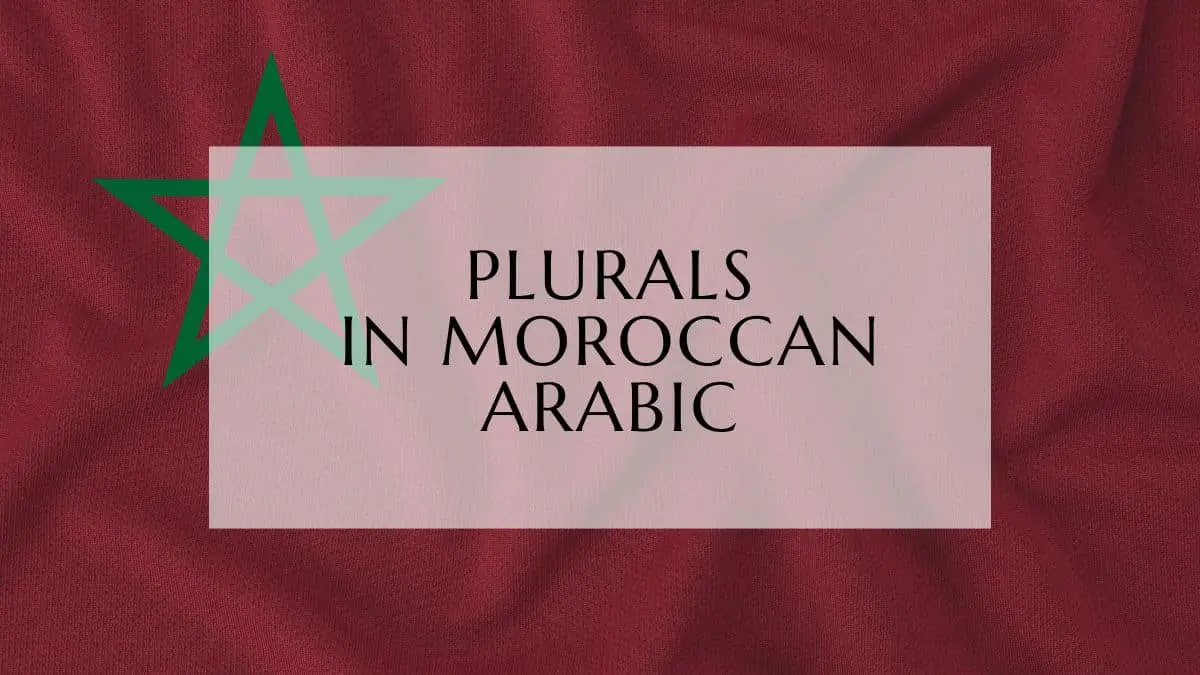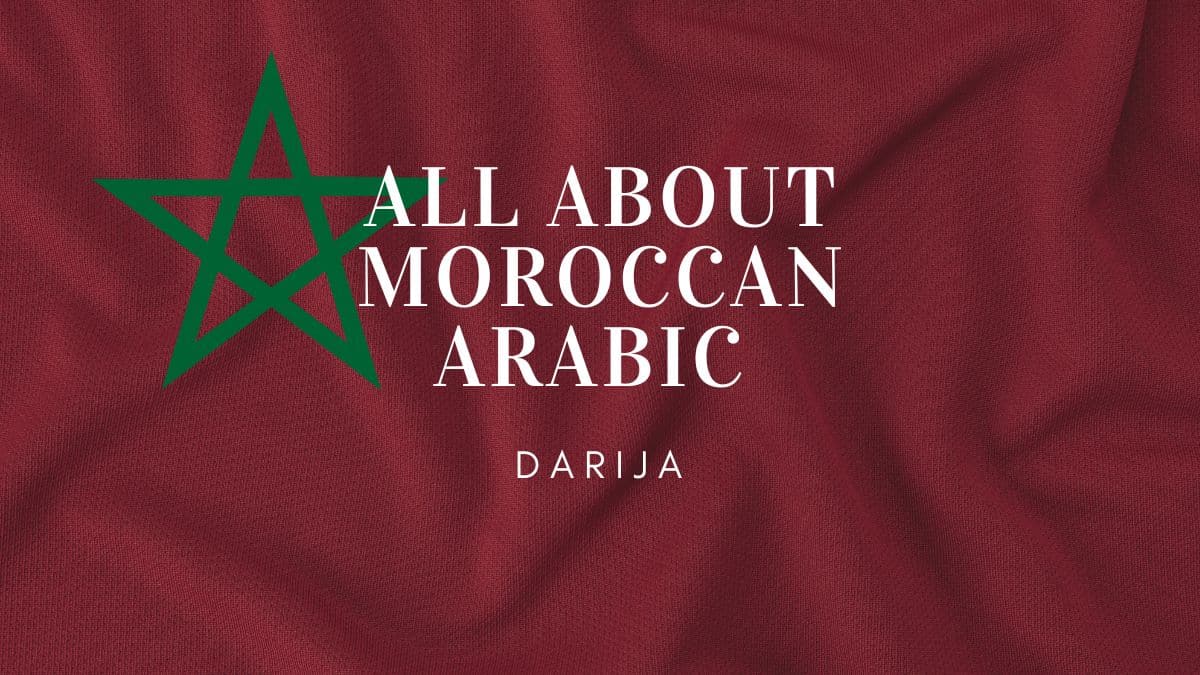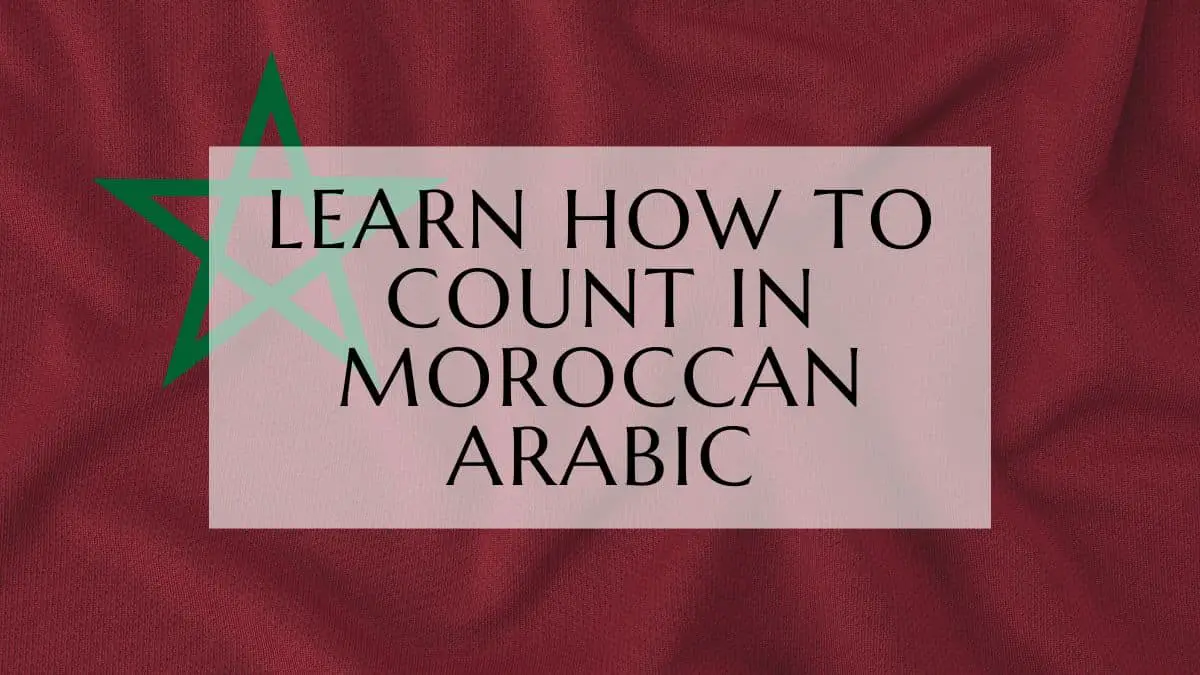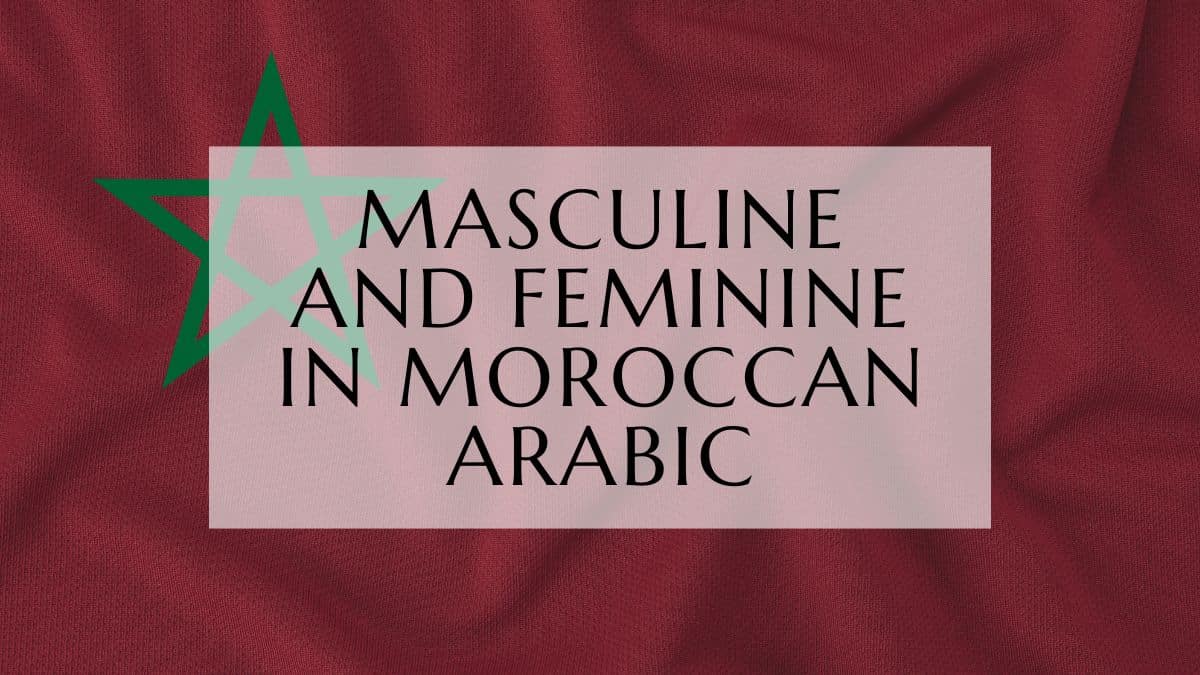In this lesson, we will talk about the plurals in Moroccan Arabic, how to form them, and some irregular forms.

Plurals in Moroccan Arabic
The Regular Plurals
To form the plural, we add the suffix “in” to the end of the masculine word, and “at” to the end of the feminine one.
| English | Masculine Singular | Masculine Plural |
| Actor | Momettil ممتل | Momettilin ممتلين |
| Engineer | Mohendis مهندس | Mohendisin مهندسين |
| Athlete | Riyadi رياضي | Riyadiyin رياضيين |
| Inspector | Mufettish مفتش | Mufettishin مفتشين |
| Journalist | Sa7afi صحفي | Sa7afiyin صحفيين |
| Lawyer | Mo7ami محامي | Mo7amiyin محاميين |
| Painter | Ressam رسام | Ressamin رسامين |
| Translator | Moterjim مترجم | Moterjimin مترجمين |
| Blue | Zrq زرق | Zrqin زرقين |
| Purple | Banafsaji بنفسجي | Banafsajiyin بنفسجيين |
| Yellow | Sfr صفر | Sfrin صفرين |
For feminine:
| English | Feminine Singular | Feminine Plural |
| Actress | Momettila ممتلة | Momettilat ممتلات |
| Engineer | Mohendisa مهندسة | Mohendisat مهندسات |
| Athlete | Riyadiya رياضية | Riyadiyat رياضيات |
| Inspector | Mufettisha مفتشة | Mufettishat مفتشات |
| Journalist | Sa7afiya صحفية | Sa7afiyat صحفيات |
| Lawyer | Mo7amiya محامية | Mo7amiyat محاميات |
| Painter | Ressama رسامة | Ressamat رسامات |
| Translator | Moterjima مترجمة | Moterjimat مترجمات |
| Blue | Zrqa زرقة | Zrqat زرقات |
| Purple | Banafsajiya بنفسجية | Banafsajiyat بنفسجيات |
| Yellow | Sfra صفرة | Sfrat صفرات |
Note: for words ending with “i” we add “y” before the suffix: banafsaji (purple, singular): banafsajiyin (purple, masculine, plural)
Adjectives
It’s common to use the masculine plural form of adjectives, for feminine as well.
Examples:
White refrigerators: tellajat bydin, you will rarely find someone saying “tellajat bydat”
Beautiful cars: tonobilat zwinin
Note: you can practice what you’ve learned here, and learn how to pronounce each of the words in our Memrise course here, don’t know how to use the platform or sign up? we’ve got you covered in this easy-to-follow tutorial here.
The Irregular Plural
Also called “the broken plural”, there are no rules for them, so I made this list to help you with some of them:
| English | Singular | Plural |
| Baker | Khebbaz (m) خباز Khebbaza (f) خبازة | Khebbaza خبازة |
| Big | Kbir كبير | Kbar (m and f) كبار Kbarat (f) كبارات |
| Book | Ktab كتاب | Ktuba كتوبة |
| Cheap | Rkhis رخيص | Rkhas (m, f) رخاص |
| Cook | Tebbakh طباخ | Tebbakha (m, f) طباخة Tebbakhat (f) طباخات |
| Dear | 3ziz عزيز | 3zaz (m,f) عزاز 3zizat (f) عزيزات |
| Dumb | Ghabi غبي | Aghbiya (m,f) أغبياء |
| Far | B3id بعيد | B3ad (m,f) بعاد B3adat (f) بعادات |
| Heavy | Tqil تقيل | Tqal (m,f) تقال Tqalat (f) تقالات |
| Innocent | Bari2 بريء | Abriya2 (m,f) أبرياء |
| Jealous | Meghyar مغيار | Meghyara (m,f) مغيارة Meghyarat (f) مغيارات |
| Judge | Qadi قاضي | Qodat (m,f) قضاة |
| Man | Rajel راجل | Rjal رجال |
| New | Jdid جديد | Jdad (m,f) جداد Jdadat(f) جدادات (less used) |
| Old | Qdim قديم | Qdam (m,f) قدام |
| Professor (m) | Ostad أستاذ | Asatida أساتذة |
| Professor (f) | Ostada أستاذة | Ostadat أستاذات |
| Short | Qsir قصير | Qsar (m,f) قصار Qsarat (f) قصارات |
| Sick | Mrid مريض | Mrad (m,f) مراض |
| Small | Sghir صغير | Sghar (m,f) صغار Sgharat (f) صغارات |
| Tall | Twil طويل | Twal (m,f) طوال |
| Woman | Mra مرا | 3yalat عيالات |
| Writer | Katib كاتب | Kuttab كتاب |
Note: As we have just seen in the previous section about the plural of adjectives, you can use the masculine plural for both masculine and feminine (m, f) yet I included the feminine form in case you wanted to use them anyway or were curious about them.
Moroccan Arabic Plurals Review Guide
Section 1: Regular Plural Formation
Masculine Nouns:
- Add the suffix “-in” to the singular form.
- Example: momettil (actor) becomes momettilin (actors).
Feminine Nouns:
- Add the suffix “-at” to the singular form.
- Example: momettila (actress) becomes momettilat (actresses).
Special Cases:
- Words ending in “-i” add a “-y” before the plural suffix.
- Example: banafsaji (purple) becomes banafsajiyin (purple, masculine plural).
Adjective Agreement:
- While feminine plural forms exist, it’s common to use the masculine plural form of adjectives for both genders.
- Example: tellajat bydin (white refrigerators) is more common than tellajat bydat.
Section 2: Irregular Plural Formation (“Broken Plurals”)
- Irregular plurals do not follow set patterns.
- Memorization is key for mastering them.
- Refer to the provided list for common examples of singular and plural forms.
- Example: ktab (book) becomes ktuba (books).
Section 3: Quiz
Instructions: Answer the following questions in 2-3 sentences each, drawing from the provided material.
- Explain the basic rule for forming regular masculine plurals in Moroccan Arabic.
- How do you form the regular plural of feminine nouns in Moroccan Arabic?
- Provide an example of a Moroccan Arabic word ending in “-i” and its masculine plural form.
- What is the common practice regarding adjective agreement with feminine plural nouns?
- What is meant by the term “broken plural” in the context of Moroccan Arabic?
- Give an example of a Moroccan Arabic word with a “broken plural” and its plural form.
- Is it ever acceptable to use the feminine plural form of adjectives in Moroccan Arabic? Explain.
- Translate the following phrases into Moroccan Arabic: “tall women,” “new books.”
- Besides nouns, what other word class is discussed in relation to pluralization in the article?
Section 4: Answer Key
- To form the regular masculine plural in Moroccan Arabic, add the suffix “-in” to the singular form of the noun.
- Feminine nouns in Moroccan Arabic form their regular plural by adding the suffix “-at” to the singular form.
- The word “banafsaji” (purple) becomes “banafsajiyin” in its masculine plural form, demonstrating the addition of “-y” before the plural suffix for words ending in “-i.”
- Although feminine plural forms exist for adjectives, it’s standard practice to use the masculine plural form with feminine plural nouns.
- “Broken plural” refers to irregular plural forms in Moroccan Arabic that do not adhere to a predictable pattern.
- The word “rajul” (man) has the broken plural “rijaal” (men), showcasing the unpredictable nature of such plurals.
- While less common, using the feminine plural form of adjectives is acceptable, particularly when emphasizing the feminine aspect or for stylistic reasons.
- “Tall women” translates to “3yalat twal,” and “new books” translates to “kutub jdad.”
- The article discusses the pluralization of adjectives in relation to their agreement with nouns.

Happy learning!
Oualid Cheddadi is the founder of Lingualid, a platform that inspires independent language learners worldwide, regardless of the language they are learning. The name “Lingualid” is derived from the Portuguese word for “language,” “língua,” and the last three letters of Oualid’s name, “Lid.”



